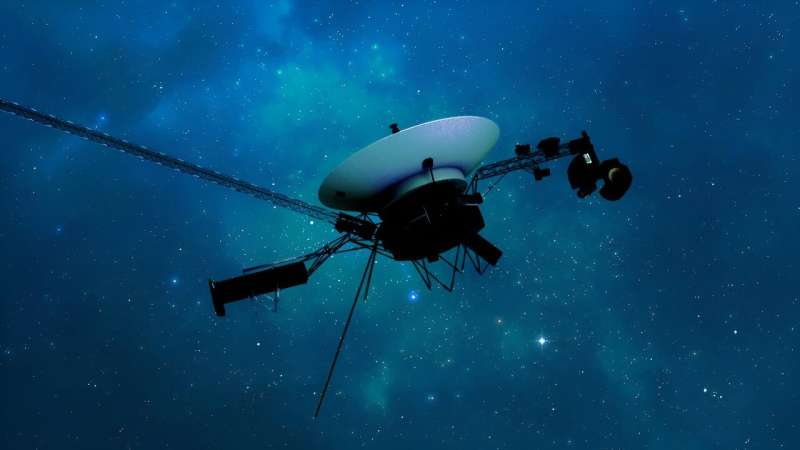The HiRISE camera aboard NASA’s Mars Reconnaissance Orbiter captured these images of sand dunes covered by frost just after winter solstice. The frost here is a mixture of carbon dioxide (dry) ice and water ice and will disappear in a few months when spring arrives. Credit: NASA/JPL-Caltech/University of Arizona
Cube-shaped snow, icy landscapes, and frost are all part of the Red Planet’s coldest season.
When winter comes to <span class=”glossaryLink” aria-describedby=”tt” data-cmtooltip=”
Mars
Mars is the second smallest planet in our solar system and the fourth planet from the sun. It is a dusty, cold, desert world with a very thin atmosphere. Iron oxide is prevalent in Mars’ surface resulting in its reddish color and its nickname "The Red Planet." Mars’ name comes from the Roman god of war.
” data-gt-translate-attributes=”[“attribute”:”data-cmtooltip”, “format”:”html”]”>Mars, the surface is transformed into a truly otherworldly holiday scene. Snow, ice, and frost accompany the season’s sub-zero temperatures. Some of the coldest of these occur at the planet’s poles, where it gets as low as minus 190 degrees <span class=”glossaryLink” aria-describedby=”tt” data-cmtooltip=”
Fahrenheit
The Fahrenheit scale is a temperature scale, named after the German physicist Daniel Gabriel Fahrenheit and based on one he proposed in 1724. In the Fahrenheit temperature scale, the freezing point of water freezes is 32 °F and water boils at 212 °F, a 180 °F separation, as defined at sea level and standard atmospheric pressure.
” data-gt-translate-attributes=”[“attribute”:”data-cmtooltip”, “format”:”html”]”>Fahrenheit (minus 123 degrees <span class=”glossaryLink” aria-describedby=”tt” data-cmtooltip=”
Celsius
The Celsius scale, also known as the centigrade scale, is a temperature scale named after the Swedish astronomer Anders Celsius. In the Celsius scale, 0 °C is the freezing point of water and 100 °C is the boiling point of water at 1 atm pressure.
” data-gt-translate-attributes=”[“attribute”:”data-cmtooltip”, “format”:”html”]”>Celsius).
Cold as it is, don’t expect snow drifts worthy of the Rocky Mountains. No region of Mars gets more than a few feet of snow, most of which falls over extremely flat areas. And the Red Planet’s elliptical orbit means it takes many more months for winter to come around: a single Mars year is around two Earth years.
Snow falls and ice and frost form on Mars, too. <span class=”glossaryLink” aria-describedby=”tt” data-cmtooltip=”
NASA
Established in 1958, the National Aeronautics and Space Administration (NASA) is an independent agency of the United States Federal Government that succeeded the National Advisory Committee for Aeronautics (NACA). It is responsible for the civilian space program, as well as aeronautics and aerospace research. Its vision is "To discover and expand knowledge for the benefit of humanity." Its core values are "safety, integrity, teamwork, excellence, and inclusion."
JPL
The Jet Propulsion Laboratory (JPL) is a federally funded research and development center that was established in 1936. It is owned by NASA and managed by the California Institute of Technology (Caltech). The laboratory’s primary function is the construction and operation of planetary robotic spacecraft, though it also conducts Earth-orbit and astronomy missions. It is also responsible for operating NASA’s Deep Space Network. JPL implements programs in planetary exploration, Earth science, space-based astronomy and technology development, while applying its capabilities to technical and scientific problems of national significance.
Two Kinds of Snow
Martian snow comes in two varieties: water ice and carbon dioxide, or dry ice. Because Martian air is so thin and the temperatures so cold, water-ice snow sublimates, or becomes a gas, before it even touches the ground. Dry-ice snow actually does reach the ground.
“Enough falls that you could snowshoe across it,” said Sylvain Piqueux, a Mars scientist at NASA’s Jet Propulsion Laboratory in Southern California whose research includes a variety of winter phenomena. “If you were looking for skiing, though, you’d have to go into a crater or cliffside, where snow could build up on a sloped surface.”

HiRISE captured these “megadunes,” also called barchans. Carbon dioxide frost and ice have formed over the dunes during the winter; as this starts to sublimate during spring, the darker-colored dune sand is revealed. Credit: NASA/JPL-Caltech/University of Arizona
How We Know It Snows
Snow occurs only at the coldest extremes of Mars: at the poles, under cloud cover, and at night. Cameras on orbiting spacecraft can’t see through those clouds, and surface missions can’t survive in the extreme cold. As a result, no images of falling snow have ever been captured. But scientists know it happens, thanks to a few special science instruments.
NASA’s Mars Reconnaissance Orbiter can peer through cloud cover using its Mars Climate Sounder instrument, which detects light in wavelengths imperceptible to the human eye. That ability has allowed scientists to detect carbon dioxide snow falling to the ground. And in 2008, NASA sent the Phoenix lander within 1,000 miles (about 1,600 kilometers) of Mars’ north pole, where it used a laser instrument to detect water-ice snow falling to the surface.
Cubic Snowflakes
Because of how water molecules bond together when they freeze, snowflakes on Earth have six sides. The same principle applies to all crystals: The way in which atoms arrange themselves determines a crystal’s shape. In the case of carbon dioxide, molecules in dry ice always bond in forms of four when frozen.
“Because carbon dioxide ice has a symmetry of four, we know dry-ice snowflakes would be cube-shaped,” Piqueux said. “Thanks to the Mars Climate Sounder, we can tell these snowflakes would be smaller than the width of a human hair.”

The HiRISE camera captured this image of the edge of a crater in the middle of winter. The south-facing slope of the crater, which receives less sunlight, has formed patchy, bright frost, seen in blue in this enhanced-color image. Credit: NASA/JPL-Caltech/University of Arizona
Jack Frost Nipping at Your Rover
Water and carbon dioxide can each form frost on Mars, and both types of frost appear far more widely across the planet than snow does. The Viking landers saw water frost when they studied Mars in the 1970s, while NASA’s Odyssey orbiter has observed frost forming and sublimating away in the morning Sun.

HiRISE captured this spring scene, when water ice frozen in the soil had split the ground into polygons. Translucent carbon dioxide ice allows sunlight to shine through and heat gases that escape through vents, releasing fans of darker material onto the surface (shown as blue in this enhanced-color image). Credit: NASA/JPL-Caltech/University of Arizona
Winter’s Wondrous End
Perhaps the most fabulous discovery comes at the end of winter, when all the ice that built up begins to “thaw” and sublimate into the atmosphere. As it does so, this ice takes on bizarre and beautiful shapes that have reminded scientists of spiders, Dalmatian spots, fried eggs, and Swiss cheese.
This “thawing” also causes geysers to erupt: Translucent ice allows sunlight to heat up gas underneath it, and that gas eventually bursts out, sending fans of dust onto the surface. Scientists have actually begun to study these fans as a way to learn more about which way Martian winds are blowing.
Source link
Related




















